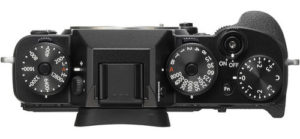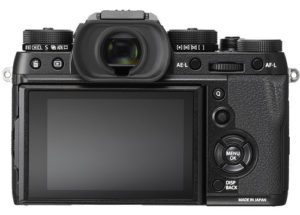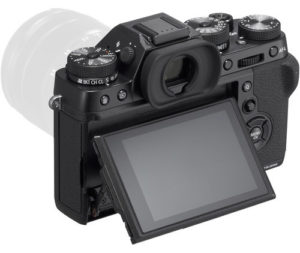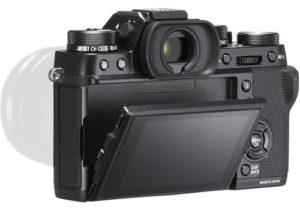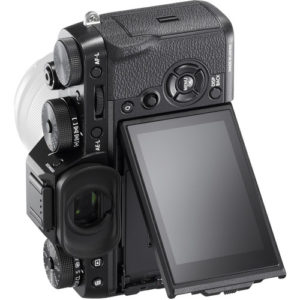Update: our complete comparison between the X-T2 and X-T20 is now online!
Following the unexpected success of the X-T1 back in 2014, Fujifilm made the strategic decision to release a smaller, stripped-down version of the flagship camera that was dubbed the X-T10. The decision must have borne fruit because Fujifilm has adopted the very same strategy with the X-T1’s successor, the X-T2, and the X-T20, the latter of which was officially announced a few days ago.
The two cameras, despite being priced very differently, have a surprising number of features in common – perhaps even more so than the original X-T1 and X-T10. These include the new 24MP APS-C X-Trans III sensor, advanced hybrid autofocus system with Custom AF settings, 4K video at 30fps, just to name a few.
In the following comparison preview, we’re going to be looking at all the most important ways in which the flagship X-T2 and mid-range X-T20 differ, with a specific focus on the features and specifications that have been removed or simplified on the cheaper model.
Ethics statement: The information supplied in this article is based on the official specifications found on the Fujifilm website and our personal experience with X series cameras. Click here to read our full comparison. We were not asked to write anything about these cameras, nor were we provided any compensation of any kind. Within the article, there are affiliate links. If you decided to buy something after clicking the link, we will receive a small commission. To know more about our ethics, you can visit our full disclosure page. Thank you!
1. Design, buttons and dials
Despite the strong physical resemblance, there are actually quite a few differences concerning the design of the two cameras as we’ll now discover.
The first that catches your eye is the size and weight: the flagship X-T2 is both bigger (132.5mm x 91.8mm x 49.2mm vs. 118.4mm x 82.8mm x 41.4mm) and heavier (507g vs. 383g) than its mid-range sibling.
Moreover, while the X-T20 doesn’t have weather-sealing of any sort, the X-T2 is dust, splash and freeze proof down to -10°C. When matched with weather-sealed XF lenses, the camera can stand up to the harshest of conditions.
Turning to the top plate, we notice that although both cameras have a range of dials, they are arranged somewhat differently.
On the X-T2, the main dials are assigned to ISO sensitivity, shutter speed and exposure compensation respectively. Usefully, first two are actually two-tier dials, with a burst/bracketing/video/panorama/advanced/multiple exposure dial sitting below the ISO dial, and a metering dial found underneath the shutter speed dial.
Of the dials found on the X-T2, the X-T20 only inherits the shutter speed, exposure compensation and burst/bracketing/video/panorama/advanced/multiple exposure dials. Both metering and ISO sensitivity have been relegated to the menu, though you can assign them to a function button if you wish.
Since the X-T20 targets mid-range users, it also comes with a dedicated Auto switch if you want to hand over full control to the camera and a built-in pop up flash.
Unlike the X-T20, on the rear of the X-T2 you can notice the handy AF Joystick to move the focus point.
Finally, the more professional X-T2 sports UHS-II compatible dual SD card slots, while the X-T20 only has one UHS-I compatible slot.
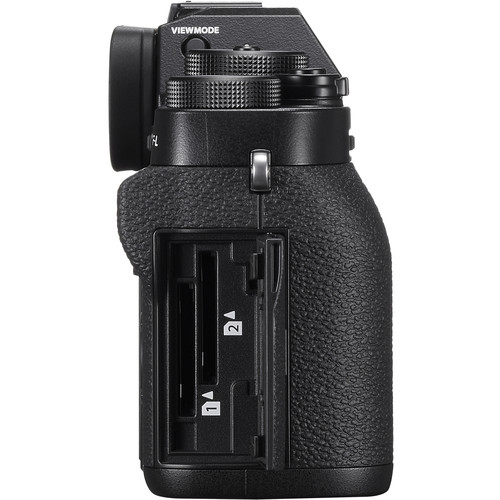
2. LCD monitor
The X-T20 features a standard tilting LCD screen that tilts up 90 degrees and down 45 degrees and becomes the second interchangeable lens model following the X-A3 to feature touch sensitivity with Touch Shoot and Touch AF options. You can also swipe through your pictures or tap and swipe to adjust magnification in playback mode.
Unique to the X-T2 (and the medium format GFX 50S) is the 3-direction tilting LCD screen. In addition to tilting up and down like that of the X-T20, it also tilts out to the side by 45 degrees which is useful when working in portrait orientation. Unlike the X-T20, it has not been given touch sensitivity.
Both monitors are 3-inch types with a native 3:2 aspect ratio and approximately 1040K-dots of resolution.
3. Built-in electronic viewfinder
Common to both cameras is a built-in centrally-placed OLED viewfinder with 2.36 million dots of resolution. However, that of the X-T2 is larger (0.5” vs. 0.39”) and has a greater magnification (0.77x vs. 0.62x).
In addition to its base refresh rate of 60fps, the X-T2’s viewfinder can be increased to an impressive 100fps in Boost mode. The X-T20’s viewfinder is limited to 54fps.
4. Mechanical shutter speed
Although both models have a maximum shutter speed of 1/32,000 with the silent electronic shutter, the X-T2’s mechanical shutter is faster than that of the X-T20 (1/8000s vs. 1/4000s). Its synchronised shutter speed for flash is also faster, reaching a maximum of 1/250s versus 1/180s on the X-T20.
5. Continuous shooting speed and buffer depth
At first glance, the continuous shooting speeds of the two cameras look almost identical in that both can shoot at a maximum of 14fps with the electronic shutter or 8fps with the mechanical shutter. Both cameras offer live view up to 5fps as well.
The X-T2 has a trick up its sleeve, however: by attaching the vertical battery grip to the camera, you can increase the burst speed with the mechanical shutter to 11fps. Since there isn’t a battery grip for the X-T20, you must use the electronic shutter to shoot at this speed.
Another difference is found in the buffer performance. For example, at 8fps – the maximum burst speed the two cameras share with the mechanical shutter – the X-T2 can fire off 83 JPG frames, 33 Losless RAW frames, or 27 Uncompressed RAW frames. By contrast, the X-T20 can only a manage 62, 25 and 23 frames respectively.
6. Sixth custom AF setting
The X-T20 inherits the X-T2’s advanced hybrid autofocus system and AF-C Custom settings, which comprises five sets with different values for Tracking sensitivity, Speed tracking sensitivity and Zone Area Switching depending on the subject being photographed. However, it lacks the sixth set that can be customised, so it looks as if you will have to rely on the presets.

7. Full pixel readout, F-Log Gamma and video recording limit
The X-T2 and X-T20 are currently the only two X-series cameras to offer 4K video capture (UHD 3840 x 2160) at 24, 25 and 30fps and 100mbps, and both can output a clean 8-bit 4:2:2 4K signal over HDMI.
You can apply the full range film simulation modes (Fujifilm’s picture profiles) to your footage but only the X-T2 has Fujifilm’s F-Log gamma profile for video, which is available via HDMI. The available sensitivity range goes from 200 to 12800 ISO and you have full manual control over your exposure settings.
The recording time is limited to 10 minutes in 4K and 15 minutes in Full HD on both cameras but can be raised to 30 minutes on the X-T2 with the battery grip.
Unlike the X-T2 which crops the sensor by 1.17x, the X-T20 doesn’t crop while recording 4K. This means that the new camera doesn’t perform full pixel readout but rather applies line skipping. As such the X-T20 has less sharpness and more aliasing in comparison to the flagship camera.
Below you can watch a 4K video comparison between the two Fujifilm cameras.
8. Audio ports
X-T20 has a 2.5mm microphone input, which will require an adapter for most microphones. The X-T2, on the other hand, has a 3.5mm microphone input. Neither has a headphone jack built into the body but here again, the X-T2’s battery grip comes to the rescue: it features with a headphone jack to enable audio monitoring during video recording.
9. Optional battery grip
I’ve mentioned the VPB-XT2 vertical battery grip for the X-T2 numerous times throughout this article, and despite being an optical accessory, many consider it a “must-have” for intensive action photography or 4K video shooting. Not only does it extend the battery life of the camera, but it also makes it more comfortable to use in portrait orientation due to the extra controls and enhances many features including the burst modes and recording time for video.

There isn’t a battery grip available for the X-T20, so those who buy one must make do with what the camera has to offer.
10. Price
We began this article by pointing out the X-T20’s role as a budget-friendly alternative to the X-T2, so it only makes sense to conclude with the difference in price.
Upon its release, the X-T2 was priced at around $1600 for the body alone or $1900 with the vertical battery grip. The X-T20, on the other hand, is listed at around $900 for the body, $1000 with the XC 16-50mm, or $1200 with the 18-55mm.
Conclusion
Note: our complete comparison between the X-T2 and X-T20 is now online!
As with any comparison that deals with a flagship and mid-range model, there are two important points to consider: your needs as a photographer and the amount of money you are willing to invest.
The X-T2 embodies the best the X-series has to offer, including the latest 24MP APS-C X-Trans III sensor, advanced hybrid autofocus system for stills and video, 4K video at 30fps with an F-Log profile option, a vast array of external controls, weather-proofing, a larger and faster EVF, excellent continuous shooting speeds, and an external battery grip to further boost the performance. It is the ideal choice for working professionals who require nothing short of the best.
Despite having cherry-picked many of the best features from the X-T2 including the sensor and autofocus system, the X-T20 better fits the role of a second, more portable body for less intensive work or travel purposes. It is also the perfect mid-range solution for photographers who don’t necessarily require weather-sealing, F-Log, or the benefits afforded by the battery grip, and may not have the budget for the high-end X-T2.
Check the price of the Fujifilm X-T2 on
Amazon | Amazon UK | B&H Photo | eBay
Check price of the Fujifilm X-T20 on
Amazon | Amazon UK | eBay | B&H Photo
Second-hand Fujifilm cameras on
You may also like:
- The Best Accessories for the Fujifilm X-T20 Compared
- Fujifilm X-T2 vs X-T20 – The complete comparison
- Fujifilm X-T10 vs X-T20 (preview)
- Fujifilm X-T1 vs X-T2 – complete comparison
- Fujifilm X-T2 vs X-Pro2 – complete comparison



